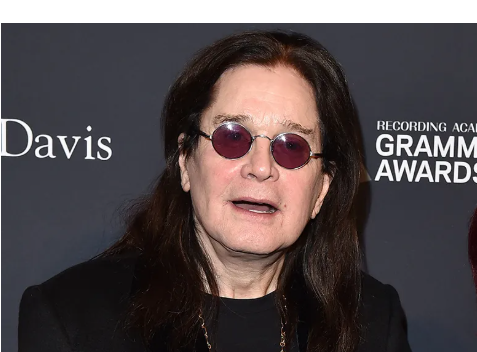Ozzy Osbourne’s financial legacy peaked in July 2025, surpassing the wealth of most rock stars. The former Black Sabbath frontman ended the last chapter of his turbulent but iconic life with a final net worth of $220 million, making him not only a heavy metal icon but also a remarkably successful businessman. His wealth didn’t appear overnight; rather, it developed over decades of audacious decisions, creativity, and fortitude in the face of intense public scrutiny.
As the lead singer of Black Sabbath, a band that created a whole new genre of heavy music in the early 1970s, Ozzy contributed to its redefining. With consistent sales over time, albums like Master of Reality, Paranoid, and Vol. 4 continue to have an impact on contemporary rock history. However, by 1979, he had become so unreliable due to his substance abuse that he was fired from the band. That could have been the end for many. It was a reinvention for Ozzy.
Ozzy Osbourne – Bio & Wealth Overview (2025)
| Detail | Information |
|---|---|
| Full Name | John Michael Osbourne |
| Known As | Ozzy Osbourne |
| Date of Birth | December 3, 1948 |
| Date of Death | July 22, 2025 |
| Age at Death | 76 |
| Nationality | British |
| Occupation | Musician, Songwriter, Actor, TV Personality |
| Known For | Black Sabbath, Solo Career, The Osbournes, Ozzfest |
| Net Worth (2025) | $220 Million |
| Marital Status | Married to Sharon Osbourne |
| Website |
With Blizzard of Ozz, he turned uncertainty into opportunity and began his solo career. With hits like “Crazy Train” and “Mr. Crowley,” that album established a new standard. It solidified his reputation as a highly versatile performer in addition to being commercially successful. His work with renowned guitarists like Zakk Wylde and Randy Rhoads helped create a sound that was both calculating and wild, which was a particularly novel combination for its era.
His albums sold millions of copies worldwide, and his tours sold out arenas throughout the 1980s and 1990s. Tens of millions were made from this era’s merchandise alone. Ozzy was marketing identity, spectacle, and rebellion in addition to music. To say that his brand had become a cultural force by the early 2000s is not hyperbole.
Ozzy was transformed from a metal icon to a household figure by the MTV program The Osbournes, which brought him into homes all over the nation. He was especially helped by the program to reach a younger audience that might not have heard his music before. Additionally, it created new sources of income, as public appearances, endorsements, and licensing agreements increased. This was a remarkably similar reinvention to what Gene Simmons had accomplished with KISS for a performer who was once thought to be too volatile for television.
Ozzfest, the metal music festival that consistently attracted large crowds, was another significant event. Since its launch in 1996, Ozzfest has sold over five million tickets and generated over $100 million in revenue. Notably, Ozzy sold $50 million worth of merchandise, making him the first rock star to do so. That astounding number wasn’t a coincidence; rather, it was the result of a highly effective marketing campaign that was fueled by Sharon Osbourne’s astute business sense.
Ozzy continued to be active even after being diagnosed with Parkinson’s disease. His last albums, including Patient Number 9 and Ordinary Man, combined new sounds with nostalgia. His voice—and spirit—remained as sharp as ever, as evidenced by the positive reception they received from both critics and up-and-coming artists. Working with musicians such as Post Malone was a very obvious way to stay culturally relevant, and it was successful.

Ozzy’s estate was set up to guarantee continuous income by the time of his passing. A remarkably resilient financial structure was created by licensing agreements, television residuals, and royalties from his music catalog. As interest in his posthumous work increased, royalties from streaming services even increased. His cameos, like his brief but memorable appearances in Little Nicky and Ghostbusters (2016), gave his already iconic career a pop culture twist.
Many people wondered how Ozzy became wealthy, but timing, creativity, and unwavering authenticity are just as important as music. He created something that went beyond music through strategic alliances, astute merchandising, and brand tenacity. His tale, which began as chaos and developed into craftsmanship, was noticeably better over time.
It is impossible to overestimate Sharon Osbourne’s contribution. She streamlined operations and turned public scandals into marketing successes by managing Ozzy’s affairs with vision and discipline. In a time when celebrity photos were frequently edited to the point of sterility, the Osbourne family brand stood out because it was founded on honesty and openness. They became surprisingly relatable by embracing their imperfections.
Ozzy’s choice to retain ownership of his masters and merchandise rights was especially creative from a financial standpoint. By doing this, he was able to profit in the long run from each vinyl reissue, digital stream, and box set that was sold. Ozzy retained the things that were important, in contrast to artists who signed away their rights for temporary gain. It was uncommon and very successful in the context of contemporary music economics.
His estate has continued to generate substantial income since his death. Ongoing revenue has come from tribute tours, the reissue of old albums, and the sale of limited-edition merchandise. Ozzy’s popularity skyrocketed once more, demonstrating that his legacy endures despite his passing.

